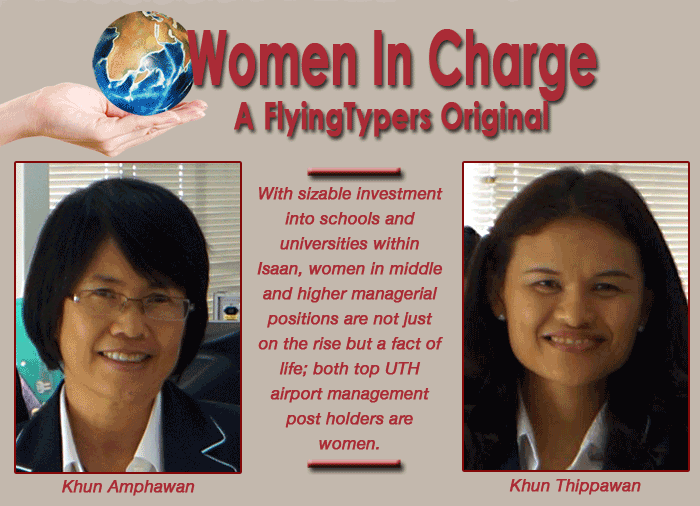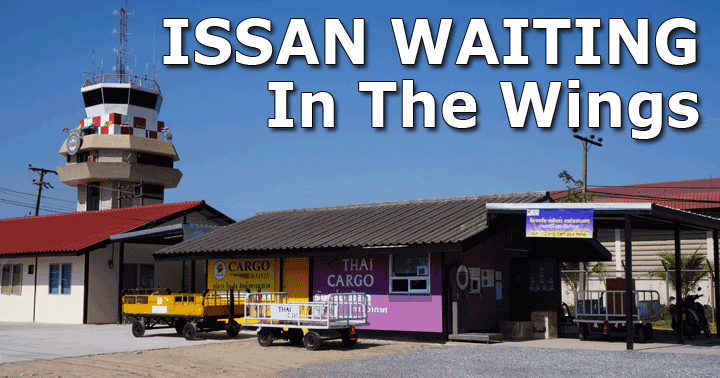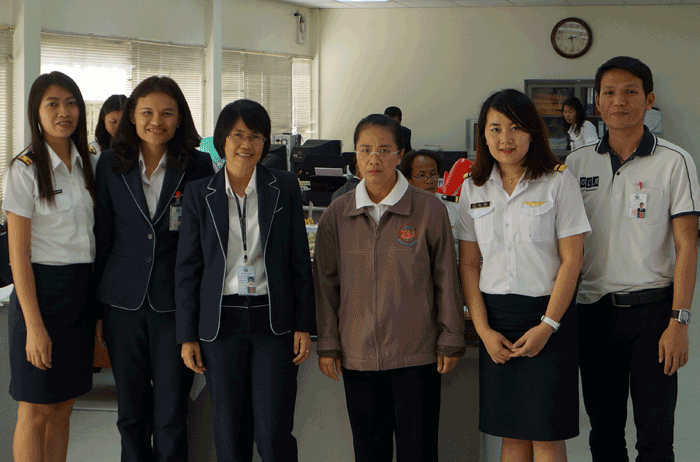 |

(Thailand Exclusive)—When thinking about Thailand, most
people inside and outside the industry focus upon Bangkok—Khrung
Thep, the city of Angels. Some may even recall the Golden Triangle-cum-hill
tribal area of Chiang Mai, or the holiday destinations Pattaya or Phuket.
Fewer people have heard about Udon Thani,
the booming capital of the Thai Northeast, called Isaan in Thai.
This, however, may change soon and people
from within the industry likely will have Udon Thani on their personal
radar in the near future.
The Isaan or Thailand’s Northeast
has traditionally been the poorhouse of Thailand, and most commonly it
used to be known as a resource for cheap labor.
Until 2004, Udon Thani was a pretty unremarkable,
dusty, and rather dilapidated provincial city. Since then things have
changed.
The Central Plaza Shopping Mall has been
refurbished, and the new UD Town shopping site features dozens of restaurants,
shops, stalls, a night market, and other attractions.
That, however, is just an outward sign of
the boom in Thailand’s Northeast; the city of Udon Thani grew from
about 280,000 to about 400,000 between 2000 and today, while the province
of Udon Thani has just above 1.5 million people.
The airport of Udon Thani (IATA: UTH, ICAO
VTUD) has experienced remarkable growth in the recent past and is currently
undergoing upgrades after having already been refurbished completely in
2006.
While UTH handled a total of 4,711 civilian
flights and 606,240 passengers in 2004, these figures grew to 5,123 flights
and 1,179,598 passengers in 2012.
Although 2013 figures have not yet been
finalized, Ms. Amphawan Wannako, Managing Director of UTH proudly confirmed
that the total number of passengers has exceeded the 1.3 million mark,
a growth many other airports would be happy to enjoy.
Most impressive about this is that this
growth is purely local in nature, e.g. these figures refer to passengers
arriving and departing locally. Currently, there is almost no transit
traffic.
This being said, UTH is also an active military
RTAF (Royal Thai Air Force) airbase and home of Wing 23, 2nd Air Division,
which is currently operating Alpha Jets acquired second hand from the
German Bundeswehr in 2001.
While Khun Amphawan admits that cargo tonnage
count is in the area of “just about a few thousand (metric) tons
per year” and so far the only source of incoming and outgoing cargoes
are the bellies of the short- and medium-haul passenger aircraft types
currently serving UTH, this may also change soon, since demand is up and
rising.
With its 2,048 meter runway equipped with
ILS (Instrument Landing System) and DVOR/NDB (Doppler Very High Frequency
Omni-Directional / Non-Directional Beacon) equipment, UTH can accommodate
any aircraft up to 747 types (as a matter of fact, UTH was used for the
temporary storage of large aircraft at times).
So what are the reasons for UTH’s
impressive success?
One should look at the even more impressive
and interesting history in order to understand the present.
Starting out as an RTAF airbase in the 1950s,
UTH gained significant military importance during the Vietnam War as both
homebase and headquarters for Air America and its predecessor CAT (Civil
Air Transport) since 1955, as well as a frontline facility for USAF Forces
from 1964 to 1975, hosting the 432nd Tactical Recon Wing.
When CAT started operations in September
1955 with the operations of three C-46, hauling food and supplies within
former Indochina, its convenient location 40 air minutes from Hanoi made
it one of the most important U.S. air logistics hubs for South-East Asia.
Most notably, UTH supported operation “Eagle
Pull” (the evacuation of U.S. personnel from Phnom Penh on April
12th, 1975) and operation “Frequent Wind” (the likewise evacuation
of U.S. and South Vietnamese personnel from Saigon on April 29th, 1975).
It was also the frontline facility for the air war against the “Pathet
Lao” forces during most of the 1960’s and early 1970’s.
The worsening political climate following
the fall of Saigon and the subsequent withdrawal of U.S. troops from former
Indochina led to the deactivation of UTH as a U.S. military facility effective
December 23rd, 1975; the last U.S. personnel were withdrawn in January
1976.
Still, the longtime presence of U.S. troops
and civil personnel in UTH had of course led to tie-ups between U.S. personnel
and local population, which resulted in a sizable number of marriages.
The latter formed the core of what these days is a sizable expat community
in Udon Thani, boosting travel and demand for air shipped goods and providing
a considerable flow of U.S. and other foreign currency into the former
Isaan poorhouse since the 1950s.
In present times, the province of Udon Thani
shows the highest number of all Thai provinces in extra-national marriages.
But make no mistake; the average Isaan girl
does not befit the stereotype of the sweet looking and demure Asian woman.
With sizable investment into schools and
universities within Isaan, women in middle and higher managerial positions
are not just on the rise but a fact of life; both top UTH airport management
post holders are women—Ms. Thippawan, the Operations Manager and
Ms. Wannako, the managing Director—so let’s do away with the
stereotypes here.
True enough, there is still poverty and
lack of education in Thailand’s rural areas, but much less so than
in the years before because the Thai government has poured sizable monies
into improving the Isaan infrastructure.
As for the reasons, opinions are mixed—while
a minority argues that the governments of former ousted prime minister
Thaksin Shinawatra’s “Thai Rak Thai” party and the current
government of his sister Yingluck Shinawatra’s “Pheu Thai”
party have allocated these monies to improve Isaan infrastructure purely
out of self-interest to gain support of rural voters, the majority of
the Isaan citizens seem content and in support of such politics.
Without judging Thailand’s political
forces, the fact is that Isaan infrastructure has improved significantly
and so have living conditions for the people.
 |
So what will the future bring for Udon
Thani and its airport?
Likely, further success. The predominant
U.S. and German expat community in Udon Thani has settled there for good
and more and more people are discovering the rustic charms of the Thai
Northeast, which—until now—is blessedly not as overrun with
Farang tourists like Phuket or Pattaya.
While currently only domestic flights operated
by Thai Airways, its low-cost affiliate NOK Air, Thai Air Asia, and Bangkok
Air are connecting UTH to Bangkok, Chiang Mai, and Phuket, further destinations
should be added soon. Since UTH enjoys the status of a customs airport,
numerous charter flights (mainly to other Asian countries) have been operated
from there and establishing regular international connections will seemingly
come in the near future, given the desolate state of Aviation in the neighboring
states of Laos and Cambodia.
Being one of the most important border points
between Thailand and Laos and the “Friendship Bridge” between
Nongkhai in Thailand and Vientiane in Laos, Udon Thani moves a sizable
portion of this traffic; for lack of reliable air services into Vientiane,
many passengers (and a sizable number of cargos) go to UTH and onwards
by bus, car, and truck.
It is noteworthy that UTH does not need
to compete with other Thai or foreign airports, which gives it a pretty
unique marketing position.
As for neighboring airports in Cambodia
and Laos, the underdeveloped air transport system and air transport facilities
in both countries effectively prevent any competition.
As for other Thai airports, most of them
(28, including UTH) are owned and operated by the Thai Civil Aviation
Authority, while the two most important ones, Bangkok-Suvarnabhumi and
Bangkok-Don Mueang, are operated by AoT (Airports of Thailand). One (U
Tapao) is operated by the Royal Thai Navy while another one (Surin) is
operated by the provincial government of Surin.
According to Khun Amphawan, this system
works pretty well and the Thai CAA seems to balance the budgets allocated
to its respective airports in a most reasonable manner. This statement
of hers obviously has merit, since the mandated ICAO Security Audits have
neither shown significant deficiencies nor are the facilities lacking
in standard.
So indeed, the Thais seem to get something
right here and the sustainable development of Udon Thani’s airport
is sufficient proof that things are well on track in the Isaan—a
place where fascinating history merges with a sustainable present and
a prosperous future.
Jens
|



